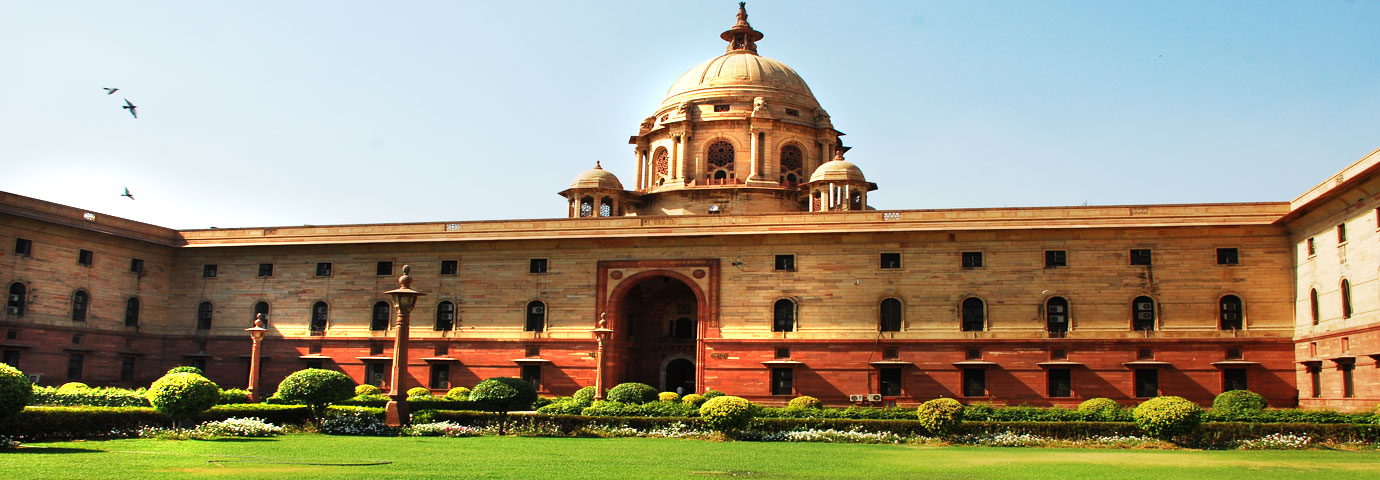Location - Western end of Rajpath
Home to the President of the world’s largest democracy, Rashtrapati Bhavan has a multi-dimensional magnificence. There are very few residencies of the various Head of States around the world, which will match the splendor, size and massiveness of Rashtrapati Bhavan.
The former residence of the erstwhile residence of the British Viceroy before independence, the structure was designed by renowned British architect, Sir Edwin Landseer Lutyens. The decision of building the Viceroy’s residence in Delhi was taken in 1911 in Delhi Durbar when the decision of shifting the capital from Calcutta to Delhi was taken. Its construction was the mark to show the permanence of British rule in India. The complete complex with staff quarters and the Mughal Complex was Rs. 14 million. The construction of the building took a total of 18 years.
After independence, on 26th January in 1950, this Durbar became the residence of the first Prime Minister of India, Dr. Rajendra Prasad. On this, the building was renamed as Rashtrapati Bhavan- the President’s House.
President’s residence-cum-official building has 340 rooms, which are spread on four floors, with one floor covering an area of 200, 000 square feet. The superimposing dome of the building looks mammoth and is visible from a distance. Lutyens had dedicated the dome’s design to the pantheon of the Rome, however experts believe that it looks like the Sanchi Stupa. Even the architecture of the building with Buddhist railings, chhatris, chajjas, and jaalis, look like that of an Indian origin. Influence of European and Hellenic styles of architecture can also be seen. Another special feature of Rashtrapati Bhavan are the temple bells in the pillars.
In July 2014, the then President of India Pranab Mukherjee had inaugurated a museum that has interesting displays on architecture, art and the lives of past presidents.


